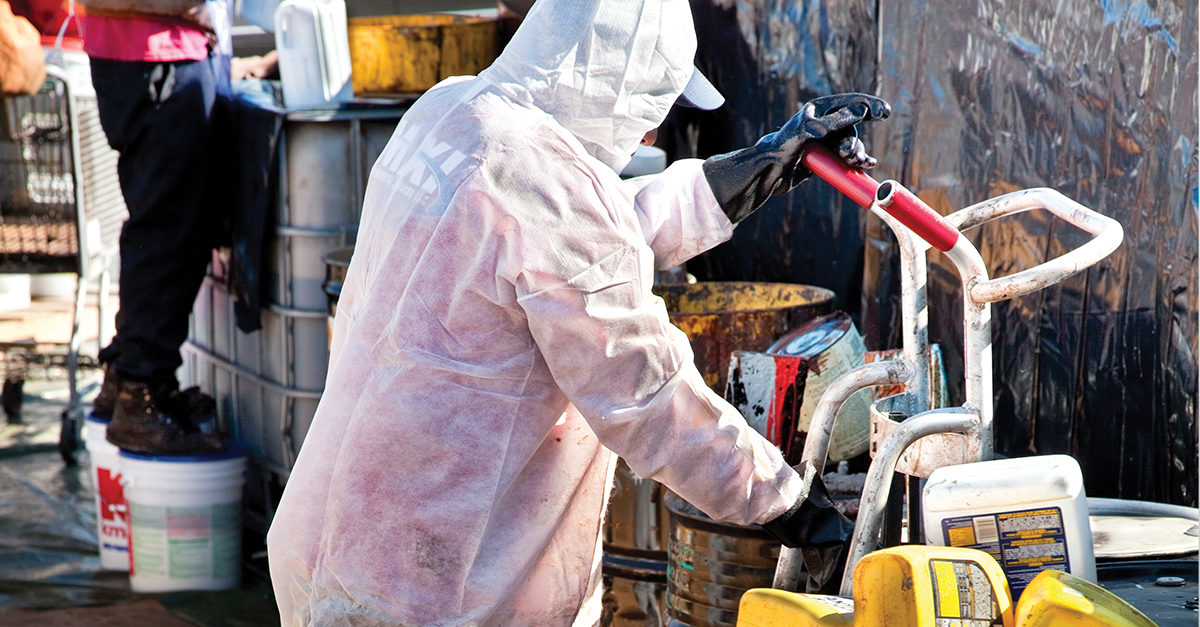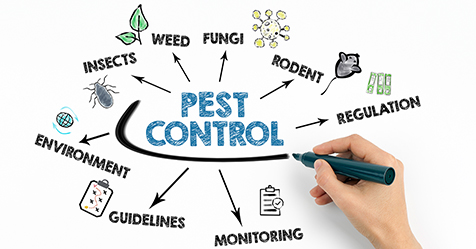In an industry where profit is relatively low, the issue of safety is the big gorilla in the room—not only when it comes to avoiding personal injury or accidents, but also when it comes to ensuring we remain compliant with standards and regulations that make us eligible to submit a proposal to a client.
Safety is an important topic for any organization; minimizing risks to staff and those we service is always a high priority. During the last several years, safety and compliance tracking have taken on an entirely new light for the contract service provider, as it now directly influences both acquiring and retaining clients.
In recent years, an increasing awareness of environmental health and safety (EHS) and its relationship to cost reduction and reporting compliance has led many organizations to develop well-defined safety programs that now include distinct contractor requirements. Additionally, an increase in scrutiny by the U.S. Occupational Safety and Health Administration (OSHA) regarding exposure to unsafe work conditions has helped to influence the focus on contractor safety.
As service contractors, we must prepare to not just meet, but exceed the safety compliance needs of clients and potential clients. This frequently means we need to thoroughly educate ourselves on the environments we intend to service, so that we can properly prepare to address the safety requirements.
Let’s look at a few steps to address these new challenges:
Prepare a Bidder Eligibility Package
It is common for bid packages to identify key safety data that contractors must provide to verify their eligibility for the job. This often includes:
- A documented safety and health program that covers personal protective equipment (PPE); lockout/tagout (LO/TO) requirements for turning off equipment; working in confined spaces; hot work, which may involve using fire- or spark-producing tools, welding, or other high-temperature work; and ladder safety.
- At least three years of OSHA logs.
- Any citations or violation data and action taken to correct them.
Conform to Site Requirements
When visiting a client site, all staff must conform to the client company’s rules and regulations. To ensure compliance, the contractor must provide all staff with initial and ongoing training. Additionally, contractors should maintain detailed records of the training each employee goes through to ensure that they are always up to date on current safety standards.
Dedicate the Correct Resources
The days of looking at safety as an add-on are in the past. Today, safety is a vital part of our daily operational success. With safety playing such a dominant role, it is important to allocate the proper resources for personnel to develop and manage successful programs. Your organization must embrace ongoing training for management, enhancements in equipment, PPE, and procedures, and make it a part of the ever-evolving safety program.
Keep Up Safety Awareness
Develop comprehensive service delivery systems that allow both the contactor and the client to be aware of staff assignments and the work they are performing. This allows the client and contractor to share vital safety information with staff who are working in specific areas to keep them safe. This sharing of information frequently takes place during brief “tool box” meetings at the start of each shift.
Seek Continuous Improvement
Accidents and near misses should not happen in a vacuum. An organization that is dedicated to enhancing its safety environment must investigate any accident or near miss to learn what happened and what can be done to prevent it from happening in the future. Develop a culture of improvement that encourages management and staff to seek out safe practices.
Stay on Top of Regulatory Changes
The requirements of OSHA and other governing bodies are constantly evolving, and ignorance of new obligations will certainly not provide a free pass. Changes to safety data sheets (SDS) and secondary container labeling are examples of changes that directly affect the industry and necessitate modifications to conform to regulatory change. Seek out resources and support that allow your organization to stay current. Do not follow the approach of “set it and forget it.”
Organizations have begun turning to compliance-monitoring services such as PICS and ISNetworld to ensure proper safety programs are in place when selecting a contractor. These services provide prequalification screening, auditing, compliance tracking, and centralized record storage. The contractors’ compliance score is then assigned to a rating scale. This rating scale can be used to quickly determine whether or not a contractor should be offered the opportunity to submit a request for proposal (RFP).
Don’t Chance It
For today’s contractor, safety plays a fundamental role in the service delivery system. With threats that include lost revenue, lost work, and a damaged reputation, your organizational safety and health program is simply too important to leave to chance. By taking action and control of your organization’s long-term safety, the path can be set for long-term success.



